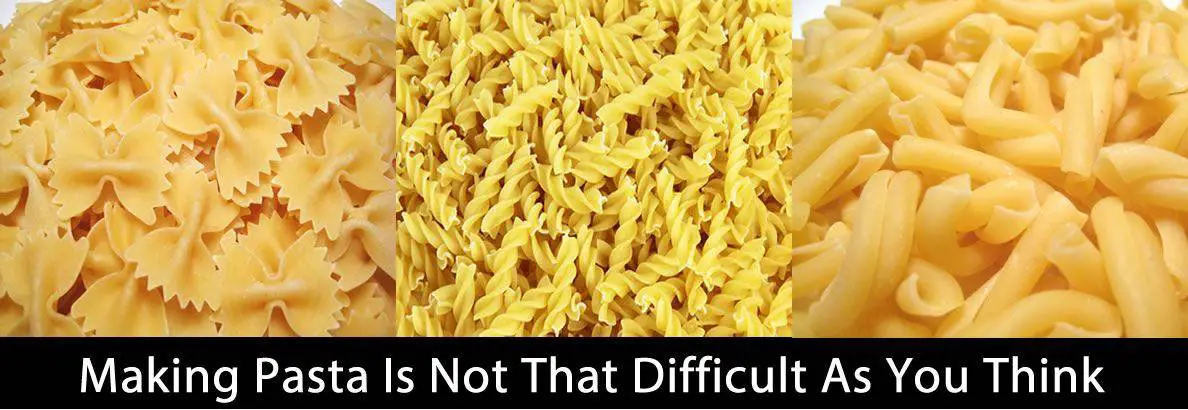There is this misconception or rather a myth where people think that the Italian grandmothers are the only humans that have mastered the art of perfect pasta making.
Well, I guess that is taking the situation to a whole new level. After all, who can’t master the art of mixing flour, salt, eggs, and some olive oil?
Some even go a step further to enroll for Italian pasta making classes. Is pasta making real a daunting messy undertaking that requires some special talent!
It is as though a beginner would come out of the kitchen covered in flour and eggs from the toes to the head. However, the biggest surprise is that pasta making is the simplest undertaking.
Unless you want to complicate it on your own, you will find everything from scratch pretty straightforward.
This is not a thorn in the flesh that will always turn your favorite weekends and parties into nasty experiences.
After practicing the art of pasta making for a short duration you will get to know how this craft works.
Actually, after playing with a number of components you will finally learn to fine-tune the art of pasta making to a whole new level.
When it is time to rock that much awaited birthday party or close the month with get-togethers, throwing a bowl of pappardelle will take you less than an hour.
Once you have eggs, flour, olive oil and some salt on your working table top, you just need some ingredients and you are good to go.
You are gonna love the beautifully silk yet springy flour texture and the egg yolk flavor.
You don’t need all type of pasta ingredients to be a pro. In fact, you can make the perfect pasta by using flour and water, nothing more!
The process of making pasta
However, it is good to understand the contribution made by other ingredients in the whole process of making pasta:
- Even though the old grandmothers would make a whole miracle of pasta by just using water and flour, you can add eggs to add to the flavors. Eggs contain protein, fat and make the dough much easier to work with.
- Adding olive oil, on the other hand, makes the dough supplier. It will roll out easily.
- When you feel everything is in the right proportion but the texture doesn’t feel good, you can add water to make the dough soft. However, be careful not to add too much water as this may lead to mushy noodles.
- Salt corrects the flavor and helps strengthen gluten. Your dough will gain a better structure and elasticity with some salt added in.
- Type “00” flour is ideal when you plan to prepare a delicate recipe such as noodles. All-purpose flour works pretty fine too with the unnoticeable difference compared to type “00”.
- Some pasta makers mix type “00” and semolina which works great for some recipes. When you want coarser pasta for springier thicker noodles, bread flour is very ideal.
- Allowing the dough to rest gives room for hydration whereby water molecules get into every nook and cranny of the dough.
- It will be then easier to cut the dough into shapes such as ravioli, linguine, pappardelle, and fettuccine.
Generally, making homemade pasta is one of the easiest tasks. In less than 45 minutes, your huge batch of perfect pasta will be ready.
It is simpler than you could ever imagine. Once you get enough courage to give it a try, it will take a few practices before everything falls into place.
